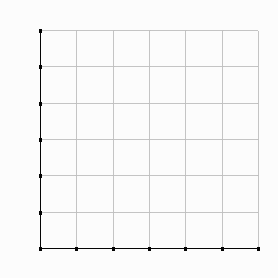Use the information in the table below to construct a supply curve in the diagram to the right:

Each tickmark: P: $30 million; Q: 2 sailors
| Sailor | Required salary ($ million) |
| A | 9 |
| B | 14 |
| C | 26 |
| D | 36 |
| E | 45 |
| F | 60 |
| G | 78 |
| H | 131 |
| I | 180 |
| J | 200 |
Supply (S) and Marginal Cost (MC)
Supply is a schedule or curve showing the relationship between various prices and quantities provided by sellers.
Each seller's individual supply curve comes from the seller's benefit-cost rule: Sell another unit if the price you receive for it exceeds (or at least covers) the unit's marginal cost (MC).
| Consider a resource market example: a celebrity navy
Use the information in the table below to construct a supply curve in the diagram to the right: |
|
|||||||||||||||||||||
|
||||||||||||||||||||||
| There are two ways to look at supply: | |||||||||||
| (1) | Given any price (P), the horizontal distance out to the supply curve tells us the quantity supplied (Qs). | ||||||||||
|
|||||||||||
| (2) | Given any unit, the vertical distance up to the supply curve tells us the unit's supply price (Ps), which equals its marginal cost (MC). | ||||||||||
|
|||||||||||
Suppose, we take the 5 lowest-cost potential sailors to help staff a voluntary navy. The value of the combined opportunity cost of all 5 = _____. (Note: this shows up in the diagram as the area under the supply curve out to Q=5.)
Key lessons:
(1) Lurking behind every supply curve are opportunity costs.
(2) Supply curves usually slope up.
(3) Price steers output of an item to its lowest cost providers.
Looking ahead: The producer surplus for any unit is the excess of the revenue
you receive (the market price) over your marginal cost (MC):
If the price is $______, how much producer surplus does sailor A enjoy?
_____